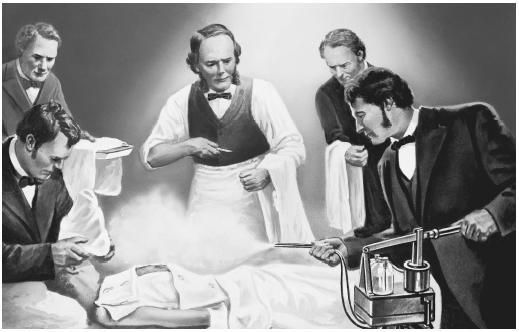This topic takes on average 55 minutes to read.
There are a number of interactive features in this resource:
 Biology
Biology
Joseph Lister was a Scottish surgeon who picked up the work of Louis Pasteur and used it to change the success rates of surgery. In 1865 Lister read about Pasteur's work on how wine went bad because of microorganisms in the air. Lister was convinced that microorganisms in the air were also the cause of the infections which killed up to half of his patients after they had successfully survived surgery. The open wounds made it easy for the germs to get into the body.
The birth of antiseptic surgery
Lister had heard that carbolic acid had been used to get rid of a cattle parasite in fields, and to treat sewage. He decided to see if it could also stop wounds becoming infected. He started to clean the wounds of his patients with carbolic acid and soak the dressings in antiseptic liquid as well. In the years from 1864-66 the death rate for Lister's surgical patients was 45.7%. Between 1867-70, when he introduced his new antiseptic treatment, this fell to 15%.
Lister went on to develop an antiseptic spray which was used in operating theatres during surgery to keep the wound clean. This spray was not used for long though, because carbolic acid actually damages the tissues and breathing it in causes many problems. More successful was the special dressings he developed which contained carbolic acid to keep the wound clean but a barrier to keep it away from the flesh, so it didn't cause any damage.
Lister's work revolutionised surgery once his aseptic techniques were accepted. Although the antiseptics and disinfectants used have changed, aseptic surgery is still the basis of saving millions of lives.

Joseph Lister in theatre